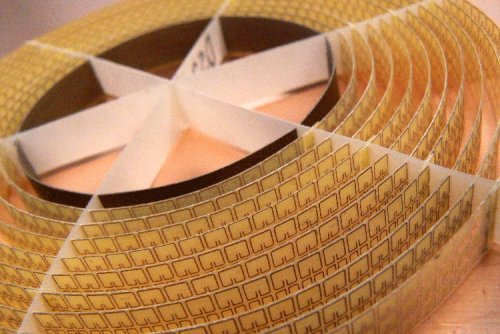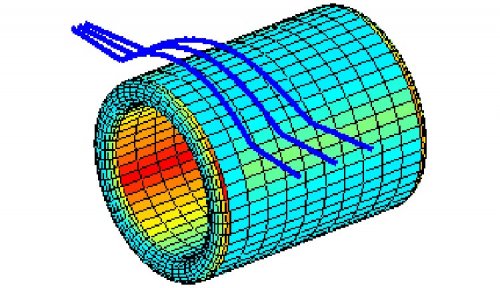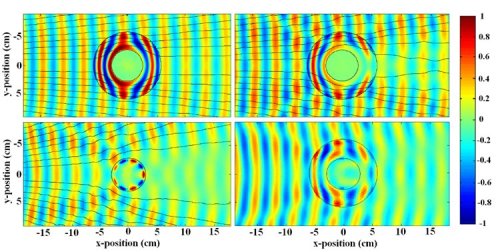- Joined
- 13 August 2007
- Messages
- 7,469
- Reaction score
- 7,522
you know it from TV
in Star Trek, the Klingons and Romulan use Cloaking device
or in Anime Full Metall Panic, have Invisible Helicopter.
only Sci Fi ? NO !
in 2006 David Schurig and his colleagues at Duke University in Durham,
imagined the first and most primitive Cloaking device .
It consists of a ring of several layers of copper wire and fiber glass slides, and work only on microwave (radar)
on wavelength of 3.5 cm
in 2007 Christopher Davis and his colleagues have developed a camouflage cap, the visible light bend around them.
its oly green waveleng but it works!
Their camouflage cap consists of concentric rings. However, the material is another:
It consists of a transparent acrylic, on a thin gold layer is raised.
more on that work here
http://arxiv.org/ftp/arxiv/papers/0709/0709.2862.pdf
The path to a genuine camouflage cap is still far.
The previously presented camouflage caps work only in two dimensions
but Mathematicians Allan Greenleaf has idea for that
he called it "Electromagnetic Wormhole"
Greenleafs idea: Take a rectangular piece of camouflage material, roll it into a cylinder and then put in the inside of the cylinder of that thing, you want to disappear.
source (in german languade only)
http://www.spiegel.de/wissenschaft/mensch/0,1518,524320,00.html
http://www.spiegel.de/wissenschaft/mensch/0,1518,511566,00.html
Attach Picture
1: Cloaking device for Microwave
2: Electromagnetic Wormhole
3: The images show how the so-called meta-materials radiation to the ring.
So viewers get the impression that there was not the ring
in Star Trek, the Klingons and Romulan use Cloaking device
or in Anime Full Metall Panic, have Invisible Helicopter.
only Sci Fi ? NO !
in 2006 David Schurig and his colleagues at Duke University in Durham,
imagined the first and most primitive Cloaking device .
It consists of a ring of several layers of copper wire and fiber glass slides, and work only on microwave (radar)
on wavelength of 3.5 cm
in 2007 Christopher Davis and his colleagues have developed a camouflage cap, the visible light bend around them.
its oly green waveleng but it works!
Their camouflage cap consists of concentric rings. However, the material is another:
It consists of a transparent acrylic, on a thin gold layer is raised.
more on that work here
http://arxiv.org/ftp/arxiv/papers/0709/0709.2862.pdf
The path to a genuine camouflage cap is still far.
The previously presented camouflage caps work only in two dimensions
but Mathematicians Allan Greenleaf has idea for that
he called it "Electromagnetic Wormhole"
Greenleafs idea: Take a rectangular piece of camouflage material, roll it into a cylinder and then put in the inside of the cylinder of that thing, you want to disappear.
source (in german languade only)
http://www.spiegel.de/wissenschaft/mensch/0,1518,524320,00.html
http://www.spiegel.de/wissenschaft/mensch/0,1518,511566,00.html
Attach Picture
1: Cloaking device for Microwave
2: Electromagnetic Wormhole
3: The images show how the so-called meta-materials radiation to the ring.
So viewers get the impression that there was not the ring



